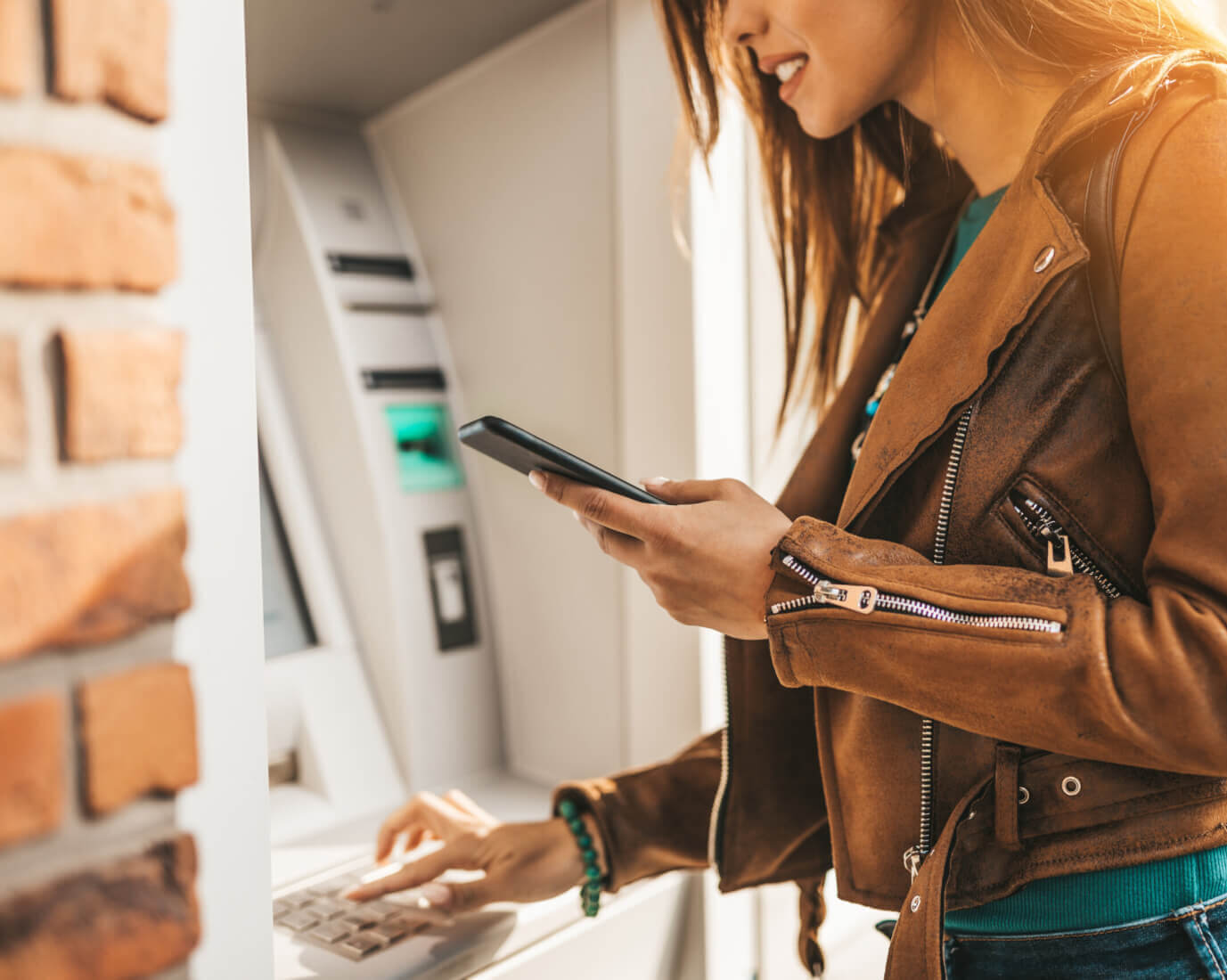Cardless ATMs rely on different types of technology in order to verify your identity and allow access to your bank accounts. Here are some of the ways cardless ATMs connect your information to the ATM:
Near-Field Communication (NFC)
Near-field communication enables 2 electronic devices to communicate with each other in close proximity using radio frequency. Tap-to-pay technology, such as Google Pay, Apple Pay, or even a credit card with an NFC chip, use NFC technology. When you tap your phone, information is being sent about your card to the ATM. Once the machine verifies it’s received your information, you’ll normally be asked to enter your PIN or use additional methods to authorize the transaction.
QR and Verification Codes
In some cases, a cardless ATM will use a QR (quick response) code to communicate information. To use a cardless ATM with a QR code, you simply point your mobile device’s camera at the code and allow it to scan — this will verify your identity. Once your identity is verified, you’ll be able to complete your transaction.
Instead of a QR code, a cardless ATM might use some other type of verification code. Similar to two-factor authentication used for added safety when you’re logging in to an account online, verification codes at a cardless ATM will generate a unique, one-time verification code that you’ll enter into the ATM along with your PIN. After indicating on your bank’s app what kind of transaction you want to make, a verification code will appear and will normally expire after a couple minutes.
Biometrics
Biometric technology relies on physical attributes, such as facial recognition and fingerprints, to verify your identity and allow access to your accounts. This verification technology is most commonly used in phones and laptops, but can also be used with banks and ATMs. When you access a cardless ATM with biometric technology, the machine will typically scan either your face, fingerprint, or iris. That information will then be compared to the data you have on file with your bank. If it matches, you’ll be given access to your accounts.


